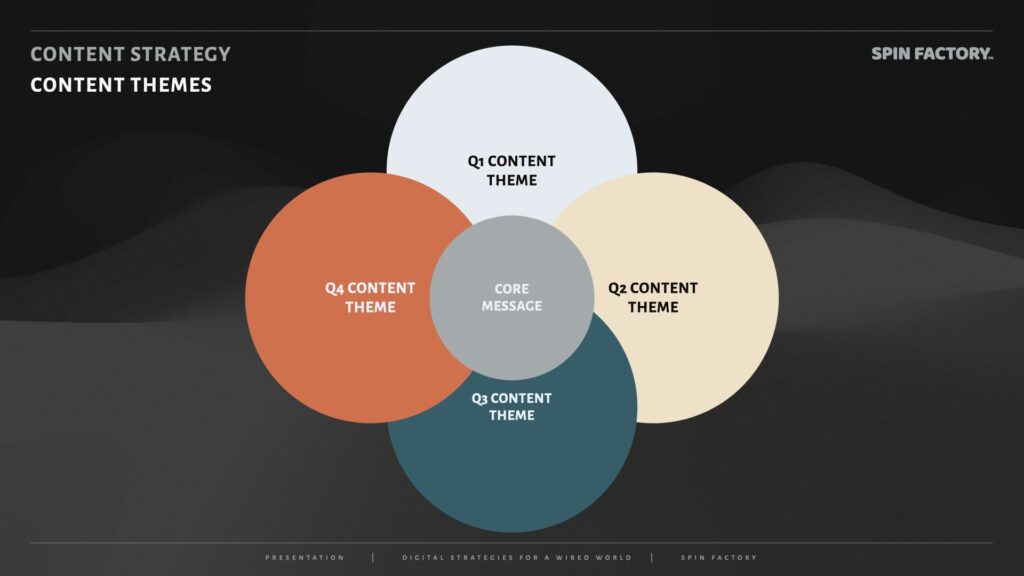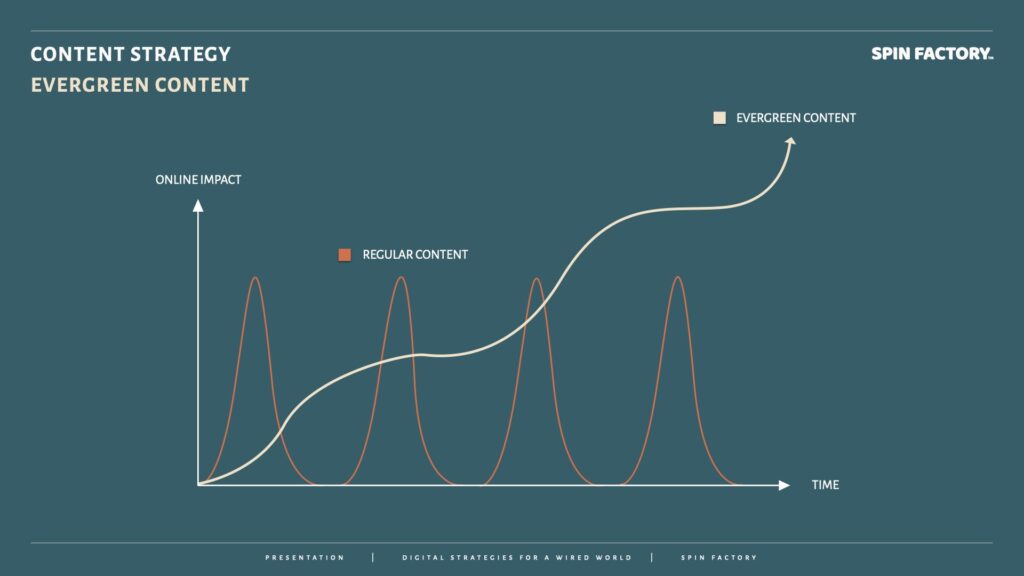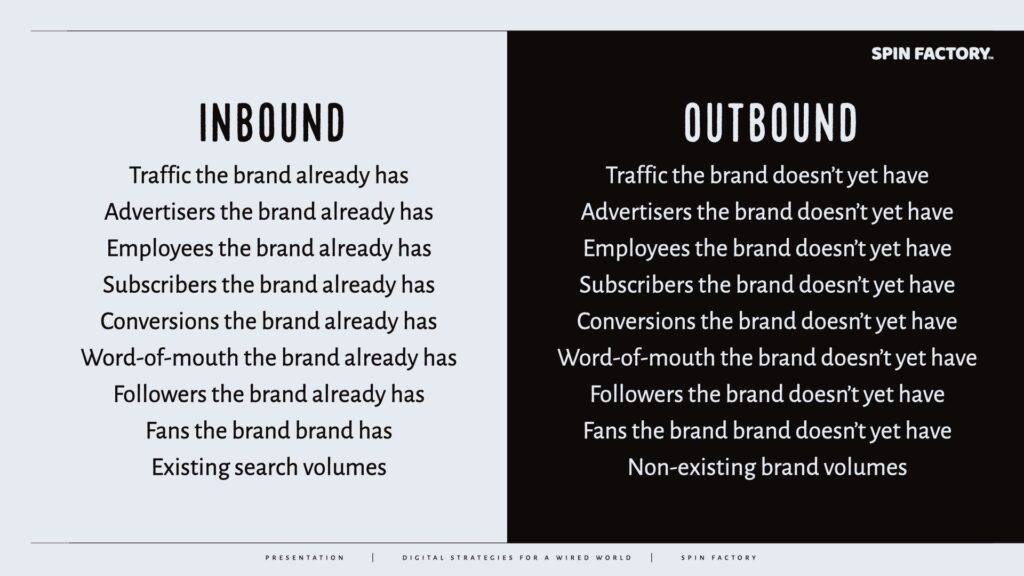We should all be building Content Skyscrapers.
I love this simple yet powerful inbound tactic.
Brian Dean of Backlinko came up with the Skyscraper Technique for content marketing. It’s as powerful as it’s elegant.
Build content skyscrapers to poach social engagement and search volumes:
It’s as if someone built the tallest skyscraper, and you decide to make a more elevated one next to them. You should get the most out of the search volumes by doing so.
Building a Content Skyscraper gives you a good idea of what it takes to succeed with content marketing in your chosen niche.
To build Content Skyscrapers (or Clusters of Content Skyscrapers), practice these techniques:
Skyscraper Technique 1: Deep Content
Deep Content
Deep content is focused on providing increasingly higher-quality information to content divers (as opposed to content surfers).
In the example, five layers of evergreen content are stacked vertically on a quarterly timeline:
Example of a five-layer deep content structure:
This inbound logic is similar to iceberg publishing and content themes regarding structure and depth.
Learn more: The Deep Content PR Strategy
Skyscraper Technique 2: Content Themes
Content Themes
It is good practice to structure the content calendar around content themes (typically four per year, one per quarter) showcasing varying aspects of the organisation’s core message.
Using content themes comes with several upsides:
For easy planning and boosting SEO with content skyscrapers, I often create content packages for each theme.
Content Themes Example
Let’s use a fictitious example of an IT company.
First, the IT company decide on a core message for their content strategy:
Core message: We make IT easy to understand.
Then, the IT company breaks their core message down into four business-critical content themes:
Q1 content theme: We make people understand the Internet of Things (IoT).
Q2 content theme: We make people understand business automation.
Q3 content theme: We make people understand cloud computing.
Q4 content theme: We make people understand managed services.
Learn more: The Content Themes PR Strategy
Skyscraper Technique 3: Evergreen Content
Evergreen Content
What’s evergreen content?
Evergreen content is an inbound approach to building core messages, content themes, content packages, deep content, and content skyscrapers.
For a piece of content to be evergreen, it must sustain its value over time. This means the content must be relevant today, tomorrow, and the foreseeable future.
While news content might make a more significant short-term splash, evergreen content accumulates online impact over time—which requires patience.
Now, forever is a long time. I typically apply these arbitrary rules to determine what constitutes evergreen content:
Learn more: The Evergreen Content PR Strategy

THANKS FOR READING.
Need PR help? Hire me here.

PR Resource: Inbound vs Outbound
The Inbound Shift
As public relations professionals, we must rethink how we think about publics. Traditionally, many PR departments have argued:
“Why should we waste budgets on ‘already acquired’ audiences?”
The truth is — it’s the other way around.
The inbound shift is a fundamental mindset change in the public relations industry.

Instead of “spamming” non-existing audiences, public relations and marketing can do much more with existing online publics. 1Silfwer, J. (2015, June 11). The Publics in Public Relations. Doctor Spin | The PR Blog. https://doctorspin.net/publics-in-public-relations/
Inbound vs Outbound: The Difference
Inbound vs outbound is the online equivalent of drawing the line between those who know you and those who don’t.
Drawing a line between those who know you and those who don’t know you is nothing new:
If your inbound shift PR strategy is strong, you might no longer need to prioritise your outbound PR strategies since your inbound audience will attract outbound publics!
Learn more: The Inbound Shift PR Strategy
Annotations
| 1 | Silfwer, J. (2015, June 11). The Publics in Public Relations. Doctor Spin | The PR Blog. https://doctorspin.net/publics-in-public-relations/ |
|---|






